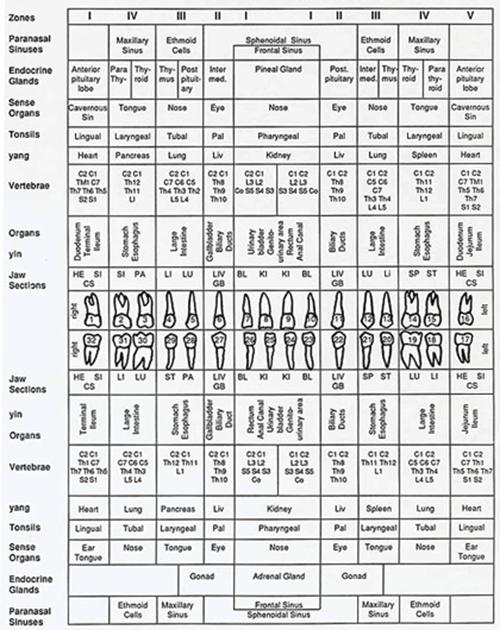
.gif)
Endodontics and Malpractice
The failure of a root canal treatment can occur in the absence of negligence. The following are among the more common categories of endodontic malpractice
- Negligent Fills
- Negligent Posts
- Negligent Instrumentation Causing Nerve Injury or Tooth Loss
- Negligent Use Of Materials
- Biologic or Holistic Issues
1. Negligent Fills
It is below the standard of care for the dentist to fail to adequately instrument the pulpal chamber and canals, so that the endodontic materials can be placed. It is below the standard of care to inadequately compact the root canal with gutta percha or silver points or to fail to completely fill the root canals to within 2mm of the periapical root tip (unless the dentist documents a calcified canal or other obstruction preventing a fill of adequate length). During the root canal treatment, the dentist takes x-rays showing his files in the root canals that demonstrate that he has properly instrumented the canals within 2mm of the periapical root tip. Failure to maintain this documentation of the root canal is below the standard of care. Negligent fills often lead to the failure of the root canal and require retreatment. Significant overfills can lead to long-term chronic inflammatory problems and must be followed by the dentist. The following are some x-rays demonstrating negligent fills:
a. Uncleaned Canal Space
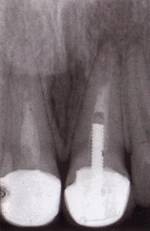
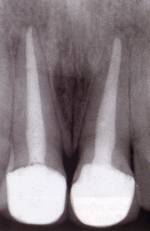
Before After
b. Inadequate Compaction and Underfill
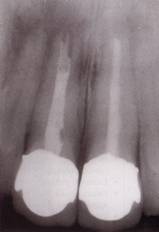
c. Incomplete Fill
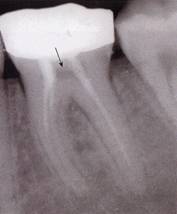
d. Overfill With File Extending Beyond Tooth
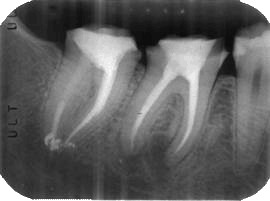
2. Negligent Posts
A post is properly used to provide increased retention for a crown when the tooth has inadequate tooth structure to hold the crown. The failure of a tooth with a good crown and a good post is not below the standard of care. The most common problem we see with posts in dental malpractice involve poor positioning (not parallel to the canal) and oversized posts, both of which place the tooth at increase risk for tooth perforation and fracture. Think of the negligent post acting like a wedge that directs destructive forces into the tooth each time you bite down.
a. Poor Positioning
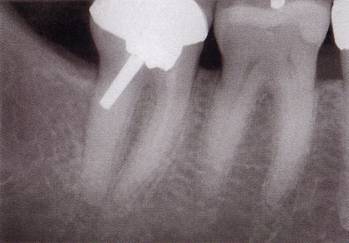
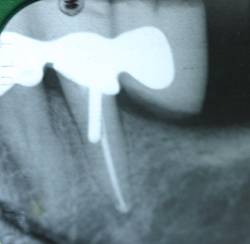
b. Oversized Posts
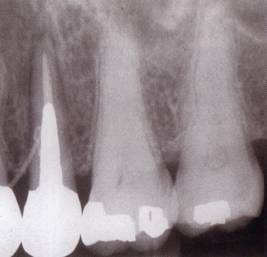
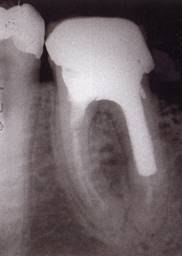
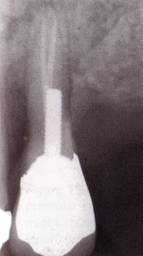
Too Wide
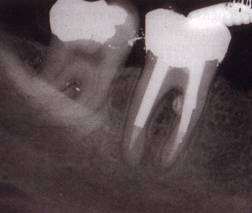
Too Long
3. Negligent Instrumentation Causing Nerve Injury or Tooth Loss
a. Instrument Breakage
The dentist is trained to know his/her instruments. The dentist needs to know how the instruments are manufactured, how they are to be used and their limitations, so that the dentist can avoid or prevent most breakages. A dentist acting within the standard of care may still break off a file or rotating burr in the tooth while performing a root canal, but the standard of care requires the dentist to make a reasonable effort to extract the broken piece and failing to accomplish this, the standard of care requires the dentist to note the breakage in the patient's dental chart, inform the patient of the breakage and monitor same over the course of future visits for any clinical symptoms of infection or other problems. There are occasions when a file has been extended so far beyond the tooth that no reasonable dentist would believe that the standard of care has been met. Sometimes the dentist performing a root canal on a molar in the lower jaw (mandible) can injure the mandibular nerve (inferior alveolar nerve) below the tooth by extending the file so far beyond the tooth, so as to injure the nerve. This is below the standard of care and can have serious consequences for the patient.

Overfill With File Extending Beyond Tooth
b. Instrumentation Damaging Tooth
A dentist who is careless with the handpiece and high speed rotating burr when preparing the interior of the tooth for a root canal may drill through the side of the tooth or at the furcation (the area below the crown where a multi-rooted tooth's roots come together. This causes tooth failure and is below the standard of care.
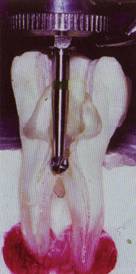
Furcation Perforation
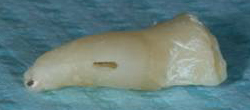
Root Canal Perforation
4. Negligent Use Of Materials
Sargenti Paste is used by some dentists as a root canal filler and is always below the standard of care. Sargenti Paste goes by a number of names including Sargenti Cement, N-2, N-2 Normal, N-2 Medical, N-2 Universal, N-2 Apical, RC-2B, RC-2W, One Step Endodontic White, TCM and Endodilato, but always contains paraformaldehyde and sometimes contains lead and mercury. Paraformaldehyde is a powder form of formaldehyde (think embalming fluid) and is highly toxic. When you have an overfill or seepage of the toxic formaldehyde outside the tooth into the vulnerable surrounding tissues, including nerve tissue, the formaldehyde can cause severe and permanent damage. No school of dentistry in the United States teaches the use of the "Sargenti Method" of root canal treatments and the American Association of Endodontics (AAE) has taken the position that no dentist should perform root canals using Sargenti Paste (see, tupeloendo.com). For more information on this subject, you are recommended to this website: sargentipaste.org
5. Biologic or Holistic Issues
There are some "dentists" who refer to themselves as "Biologic Dentists" or "Holistic Dentists". In addition to their unsubstantiated recommendations that silver amalgam fillings containing mercury need to be replaced for your health, some of these "dentists" claim that teeth with perfectly performed root canals that are asymptomatic should be extracted. The picture below claims to show the relationships between teeth and organs throughout the body. According to its these "dentists" and "medical doctors" "each tooth is related to an acupuncture meridian that in turn is related to various organs, tissues and glands in the body on this particular meridian. Thus, a problem with disease in or about a tooth may reflect with a problem elsewhere. An example: Tooth # 19 is related to L-4/L-5, the low back or lumbar vertebrae." As evidence of this relationship, Kupsinel claims that he had a root canal in tooth #19 as a teenager and a ruptured disc at L-4/L-5 in his 60s." Run as fast as you can from any health care practitioner who uses one of these charts to make a false diagnosis, recommend tooth removal, replacement of all amalgam fillings or for the prescription of wild health care products. You are recommended to the following website for additional information:
